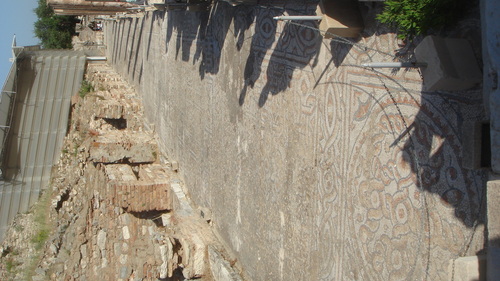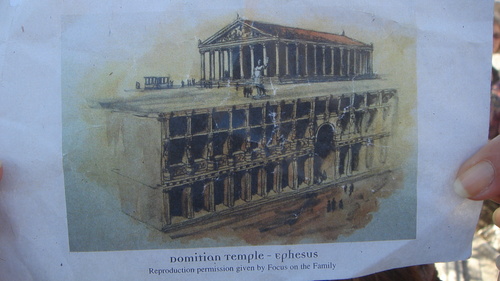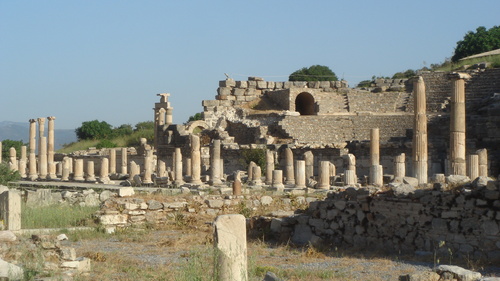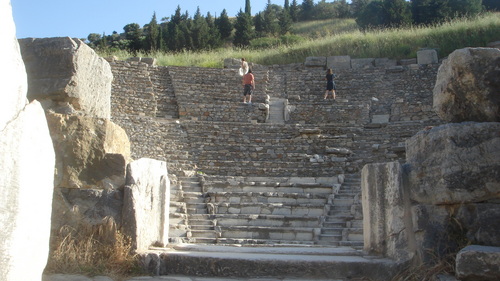
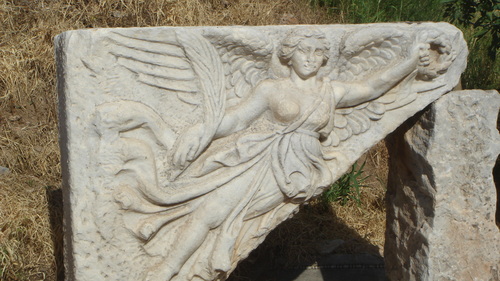
There is so much to see at Ephesus that even several trips and even with having a trained guide, there are things one misses. Here above is the oden of Domitian today at the upper end of Curetes street. But what would it have looked like in ancient times? And what would the agora across the street have looked like? (Above is an image of Nike, the goddess of victory holding the laurel wreath in her hand). Sometimes you have to look at things from a different angle, even sideways to figure it out. Below is an image of a mosaic covered street neat the terrace houses.
There is plenty of graffiti to be found if you know where to look, for example we have the famous advertisement possibly for the sex trade with the prostitute next to a broken heart and a foot indicating the right direction to find her salon. Tour guides who like to tease their visitors then say that the square below the woman represents the fact that the woman is telling you, you can pay by credit card if you don’t have cash. Actually its a sign which described what the woman was offering.
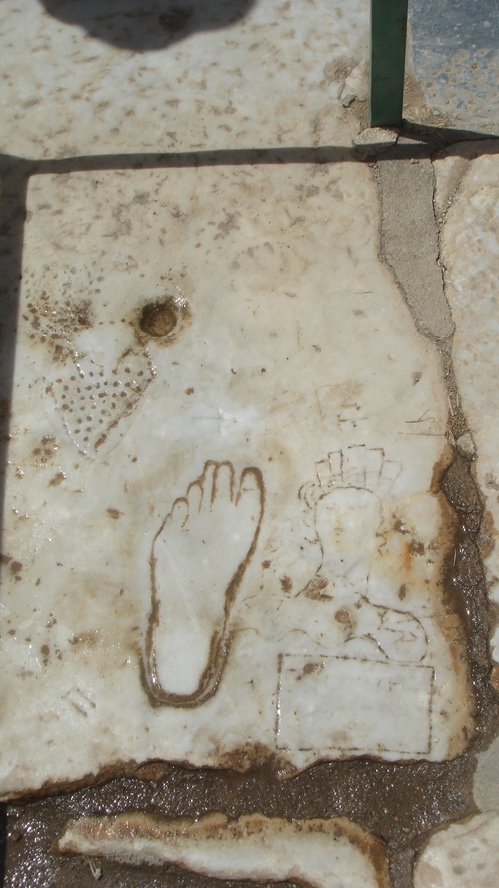
Below are some images of the original patrons and residents and athletes and heroes in Ephesus.
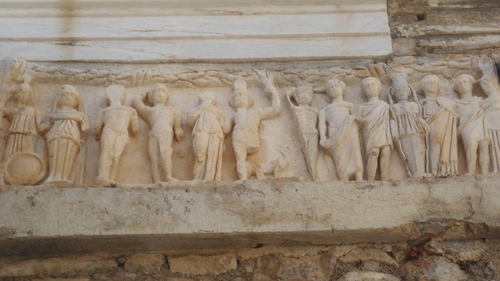
Through recreation images you will get a better picture of some of what you are looking at. Here is the agora shops on top of which was a temple to the August Domitian— And below that we see what the untrained eye sees upon entering Ephesus— ruins that are hard if not impossible to decipher without a guide. Parts of the Bible are rather like that as well, if you don’t use good commentaries. For example, in Ephes. 6 where Paul exhorts people to put on the full armor of Christ so one can stand and withstand the attacks of the powers of darkness, what Paul is not talking about is going on the offensive through deliverance ministries. He is talking about taking a strong but defensive stand knowing that you have enough to protect yourself.
